Are You 21 Or Over?
YesOr
No By clicking yes, you certify that you are over 21 years old. By using this website, you agree to our legal disclaimer.Table of Contents
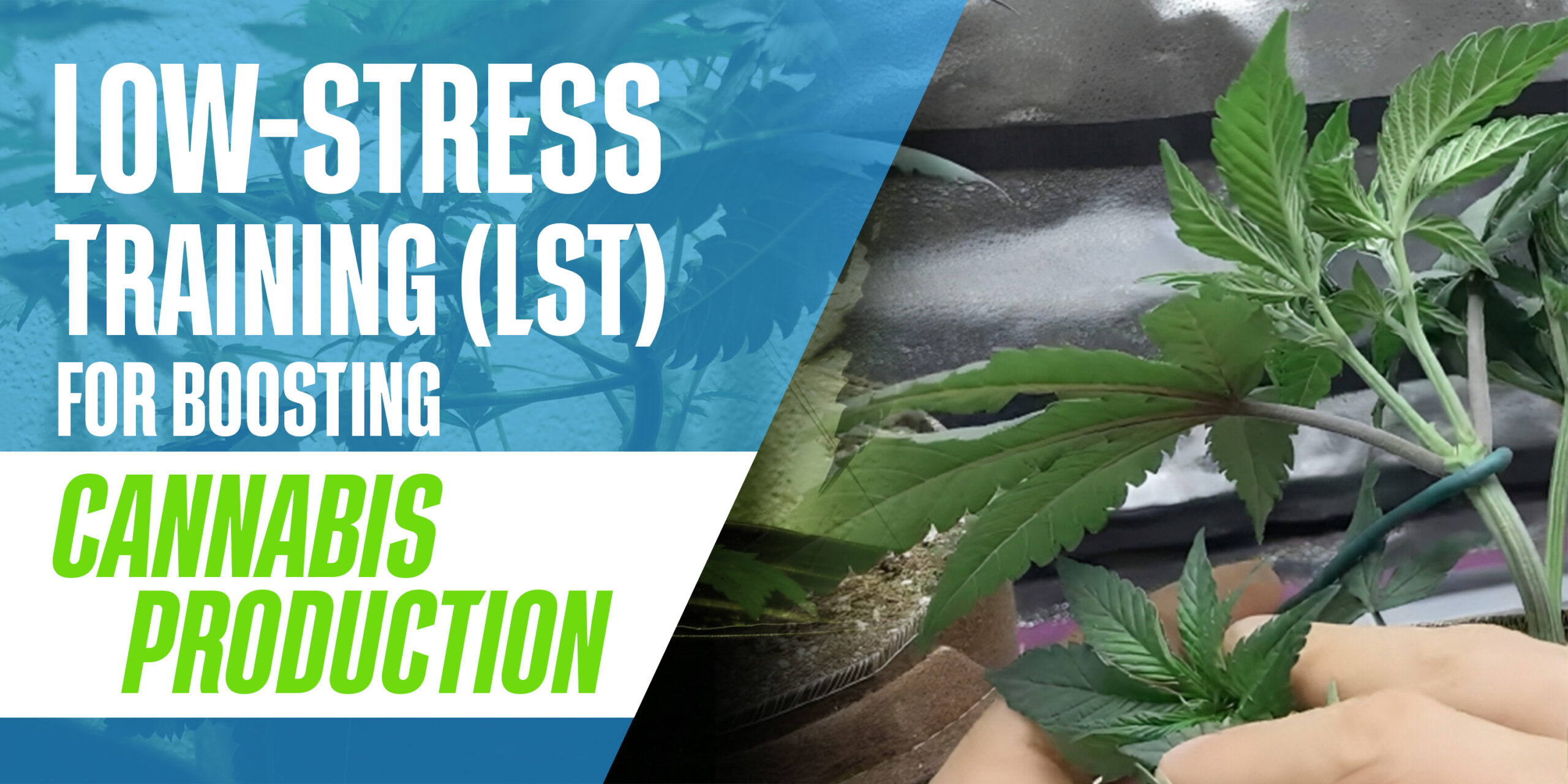
An innovative farming technique called Low-Stress Training (LST) lets producers control plant structure for the best performance. LST promotes horizontal development, best light penetration, and, finally, higher cannabis yields by precisely bending and tucking branches. Unlike high-stress methods like topping or super cropping, LST reduces plant shock, so it’s an excellent choice for growers trying to increase their output without extended recovery times.
We will discuss the science behind LST, its advantages, the required tools, and a detailed, step-by-step manual on how to best use this complete guide. These professional recommendations will help optimize your plants’ advantages and elevate your cannabis-growing experience.
Apical dominance is inherent in cannabis plants; hence, the middle stem or lead cola will be taller than the others. This behaviour results from auxins, plant hormones that direct energy to the head of the plant and, therefore, control development. While this type of development is advantageous in the wild—where plants are vying for light—it is less ideal in a controlled growing environment where equal light distribution counts.
Using LST, bending and pinning down the main stem alters the internal hormonal balance of the plant. The auxins move so lateral branches get more energy without the apex acting as the highest point. Instead of a single cola, this technique offers an even canopy with many sections of buds. Growers can enhance this redistribution such that light exposure to the whole plant is maximized, facilitating better bud development and higher harvests.
Furthermore, LST promotes a more compact and busier development pattern that is especially helpful in indoor systems with limited vertical space. Plants under LST often develop denser, more symmetrical colas; hence, lower nodes are as productive as upper nodes. Along with maximizing yield potential, this simplified development pattern simplifies handling plants throughout their life cycle.
1. Improved Light Distribution for Ideal Bud Development
Low-stress training weed offers one of the main benefits: it will provide maximum light exposure at every bud site. The main cola of an untrained cannabis plant will eclipse lesser branches, therefore reducing their light exposure. Smaller, weaker buds resulting from this develop lower on the plant. All the branches will be evenly exposed to light by training the plant with LST to horizontal, encouraging more significant, denser bud development around the plant.
LST is extremely helpful for indoor growers using artificial illumination, such as LEDs or HPS lights. Every part of the plant needs indoor light, less than sunlight outside. A well-growing cannabis plant will have an even, level canopy so that every bud site receives maximum light.
2. Higher Yields Free from Extra Stress
LST cannabis allows for a natural redirection of development without stressing the plant too much, unlike demanding methods like topping, whereby the plant is clipped and made to grow back. Plants thus repair quickly and can keep generating fresh colas without losing time on healing from breaks or cuts. Growers can, therefore, raise their general output without disturbing the vegetative cycle.
LST complements other yield-boosting techniques, including ScrOG (Screen of Green) and defoliation, which removes extra fan leaves. LST can produce larger, more profitable plants without prolonging the growing cycle.
3. Managed Plant Height for Stealth Growing
For indoor gardeners with limited room or gardeners outside looking to keep things low-key, LST is revolutionary. LST causes side development rather than letting the plant reach vertical in the air; plants stay a small height yet produce maximum buds. This is perfect for covert producers who want nothing to draw unwelcome heat with tall, clear cannabis plants.
LST lets producers employ grow tents, greenhouses, and compact places without compromising production by carefully bending the plant’s form. Coupled with other low-clearance methods such as mainlining or super cropping, LST helps maintain a covert but abundant growing setup.
Low-stress training cannabis requires the proper instruments. Although the approach is low-stress, improper application can still stress or harm plants if appropriate tools are not employed. A sound LST installation requires the following tools:
1. Use soft plant ties or rubber-coated wire.
LST’s secret is the soft bending and pinning of branches. Good ideas are gentle plant ties, rubber-coated wire, or pipe cleaners. They won’t cut into plant tissue and are bendable enough.
Use light items like string or zip ties; these will strangle and destroy the plant as it expands. Instead, use adjustable, reusable ties with a loosening capacity.
2. Thin wooden dowels or bamboo sticks
Support is vital when training plants, especially when the branches are thickening and heavier. Trained branches might otherwise be broken by weight, so bamboo pegs or thin wooden dowels can be used as support.
To serve as anchor points, bury stakes in the ground or wrap them around the edge of the pot at strategic locations. You can also couple them with ties to direct plant development specifically.
3. Anchor Point Hand Drill
For those who grow in plastic containers or cloth pots, a hand drill might save their lives. Little holes drilled on the pot’s rim allow gardeners to construct anchor points from which rope may be securely tied down. This procedure gives more control over the form and architecture of the plant so that every cola is exposed to maximum light.
4. Duct Tape for Quick fixes
Sometimes, even the most conscientious gardeners break a branch during LST. Duct tape instantly fixes breaks, preventing the loss of an entire limb. Duct tape instantly fixes breaks, preventing the loss of a whole limb. Duct tape helps people avoid losing an entire limb by quickly repairing breaks. Duct tape fixes break instantly, avoiding the loss of an entire limb. Instead of losing a whole limb, duct tape can repair breaks immediately. The plant heals in days, wrapping around the damaged area and fastening it with a stake.
A fully loaded toolkit guarantees that gardeners may change, fix, and maximize their LST equipment throughout the growth phase.
Knowing the science and tools used in low-stress training weed plants, let us dissect the procedure into doable, sensible steps:
1. Starting LST in the vegetative stage
Training your cannabis plant starts when it is young and flexible, ideally three to four weeks following germination or when the plant boasts at least three to five nodes. Starting sooner will help you to shape the plant’s development without damaging it more easily.
2. Find the main stem and gently bend it.
Find the plant’s main stem and gently slink it to one side, securing it with a delicate tie. One intends to have a horizontal rather than a vertical development pattern.
3. Train Lateral Branches for Development of Uniform Canopy
It is essential to maintain a level, flat canopy by ending and tucking new branches as the plant develops. Anytime a fresh branch shows upward, gently train it outward to prevent the plant from growing a leading cola.
4. Routinely check and tighten
Check your plant every day to ensure that every branch is developing in the right direction. If necessary, re-tighten bonds and remove any unwelcome limitations that impede progress.
5. Change into flowering using a methodical approach.
Let the plant move into flowering once it has grown to have an ideal form. Unlike one big cola, a well-executed LST approach will generate several well-spaced colas.
For cannabis farmers seeking optimum yields, healthy plants, and the best use of available space, low-stress training (LST) is a vital method. Proper LST allows gardeners to have a healthy, high-yielding garden with better light dispersion, more airflow, and enhanced bud growth through superior bud development. Being a master of LST can help you elevate your cannabis growing either indoors or outdoors.

Curious about growing weed in a healthy, effective way? Welcome to the realm of weed hydro! This method uses water instead of soil, delivering n

Peyote Zkittlez is a unique cannabis strain that has quickly gained dedicated followers among enthusiasts and patients alike. Its parentage—Zk
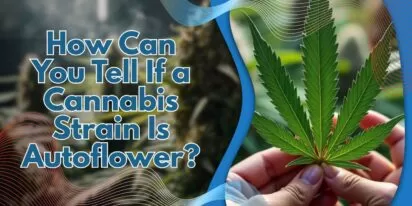
As growers, we want strains that work well, are strong, and are of good quality. Autoflowering cannabis strains are a big step forward for both
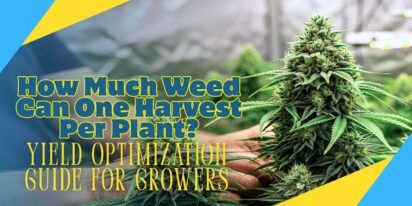
Pot growers always ask the same basic question: How much weed does a weed plant produce? The answer is complex and depends on a multitude of var

Ever had the room spin after a few hits? You're not alone. Figuring out how to prevent getting dizzy high can make your cannabis experience a wh

Drying cannabis properly is a critical process in preserving the plant's full aroma and flavor and its psychoactive abilities. Tampering with th
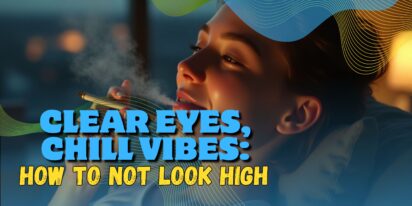
Ever caught yourself a bit too high and all of a sudden in need of being normal? Whether you're heading out for munchies or bumping into someone

Looking for sage advice on how not to get pinched with weed without batting an eye? Attempting to protect your stash from gossipy roommates, sno

Nutrient lockout, also known as nutrient binding or chemical antagonism, is a significant issue in cannabis cultivation that negatively impacts
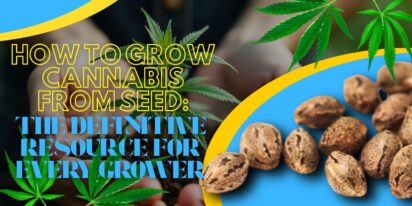
Germination is the most critical initial stage in growing healthy, high-quality cannabis plants. During germination, the dormant seed becomes a
Are You 21 Or Over?
YesOr
No By clicking yes, you certify that you are over 21 years old. By using this website, you agree to our legal disclaimer.
Excellent blog here Also your website loads up very fast What web host are you using Can I get your affiliate link to your host I wish my web site loaded up as quickly as yours lol
Your writing is not only informative but also incredibly inspiring. You have a knack for sparking curiosity and encouraging critical thinking. Thank you for being such a positive influence!
Simply wish to say your article is as amazing The clearness in your post is just nice and i could assume youre an expert on this subject Well with your permission let me to grab your feed to keep updated with forthcoming post Thanks a million and please carry on the gratifying work
Somebody essentially lend a hand to make significantly articles Id state That is the very first time I frequented your website page and up to now I surprised with the research you made to make this actual submit amazing Wonderful task
Your blog is a beacon of light in the often murky waters of online content. Your thoughtful analysis and insightful commentary never fail to leave a lasting impression. Keep up the amazing work!
Thank you for the auspicious writeup It in fact was a amusement account it Look advanced to more added agreeable from you By the way how could we communicate
Your blog is a constant source of inspiration for me. Your passion for your subject matter shines through in every post, and it’s clear that you genuinely care about making a positive impact on your readers.
Your blog is a constant source of inspiration for me. Your passion for your subject matter is palpable, and it’s clear that you pour your heart and soul into every post. Keep up the incredible work!
Your articles never fail to captivate me. Each one is a testament to your expertise and dedication to your craft. Thank you for sharing your wisdom with the world.
Your blog is a testament to your dedication to your craft. Your commitment to excellence is evident in every aspect of your writing. Thank you for being such a positive influence in the online community.
Your writing has a way of resonating with me on a deep level. I appreciate the honesty and authenticity you bring to every post. Thank you for sharing your journey with us.
Your blog is a true gem in the world of online content. I’m continually impressed by the depth of your research and the clarity of your writing. Thank you for sharing your wisdom with us.
Hi i think that i saw you visited my web site thus i came to Return the favore Im attempting to find things to enhance my siteI suppose its ok to use a few of your ideas
Somebody essentially help to make significantly articles Id state This is the first time I frequented your web page and up to now I surprised with the research you made to make this actual post incredible Fantastic job
Usually I do not read article on blogs however I would like to say that this writeup very compelled me to take a look at and do so Your writing taste has been amazed me Thanks quite nice post
Your blog has quickly become one of my favorites. Your writing is both insightful and thought-provoking, and I always come away from your posts feeling inspired. Keep up the phenomenal work!
Every time I visit your website, I’m greeted with thought-provoking content and impeccable writing. You truly have a gift for articulating complex ideas in a clear and engaging manner.
Hey there You have done a fantastic job I will certainly digg it and personally recommend to my friends Im confident theyll be benefited from this site
I have read some excellent stuff here Definitely value bookmarking for revisiting I wonder how much effort you put to make the sort of excellent informative website
Nice blog here Also your site loads up very fast What host are you using Can I get your affiliate link to your host I wish my site loaded up as quickly as yours lol
What i do not understood is in truth how you are not actually a lot more smartlyliked than you may be now You are very intelligent You realize therefore significantly in the case of this topic produced me individually imagine it from numerous numerous angles Its like men and women dont seem to be fascinated until it is one thing to do with Woman gaga Your own stuffs nice All the time care for it up
Your blog is a beacon of light in the often murky waters of online content. Your thoughtful analysis and insightful commentary never fail to leave a lasting impression. Keep up the amazing work!
Your blog is a breath of fresh air in the often stagnant world of online content. Your thoughtful analysis and insightful commentary never fail to leave a lasting impression. Thank you for sharing your wisdom with us.
Your blog is a beacon of light in the often murky waters of online content. Your thoughtful analysis and insightful commentary never fail to leave a lasting impression. Keep up the amazing work!
Usually I do not read article on blogs however I would like to say that this writeup very compelled me to take a look at and do it Your writing style has been amazed me Thank you very nice article
Your writing has a way of resonating with me on a deep level. I appreciate the honesty and authenticity you bring to every post. Thank you for sharing your journey with us.
This hydroponics guide is quite the buzz, seriously! Who knew growing weed without dirt could be so complicated yet potentially rewarding? The breakdown of systems like DWC and NFT is helpful, though I suspect my cat might confuse the air pump for a toy. The idea of cleaner buds is tempting, especially since explaining hydro weed to my non-growing friends might get messy. And the bit about potential dizziness from hydro weed? Perfect, now I have an excuse for why I always stumble a bit after a grow session. Still, the promise of faster grows and higher yields is hard to ignore, even if it means more trips to the pH meter than to the coffee shop. Overall, a cultivating read for the curious grower!